How to Tell if Pashmina is Real – 7 Ways to Check Authentic Shawls
Worried about fake pashmina? Learn how to identify real pashmina with expert tips: burn tests, weave inspection, softness check, and more. Shop authentic Himalayan pashmina.
PASHMINA GUIDE
6/23/20253 min read
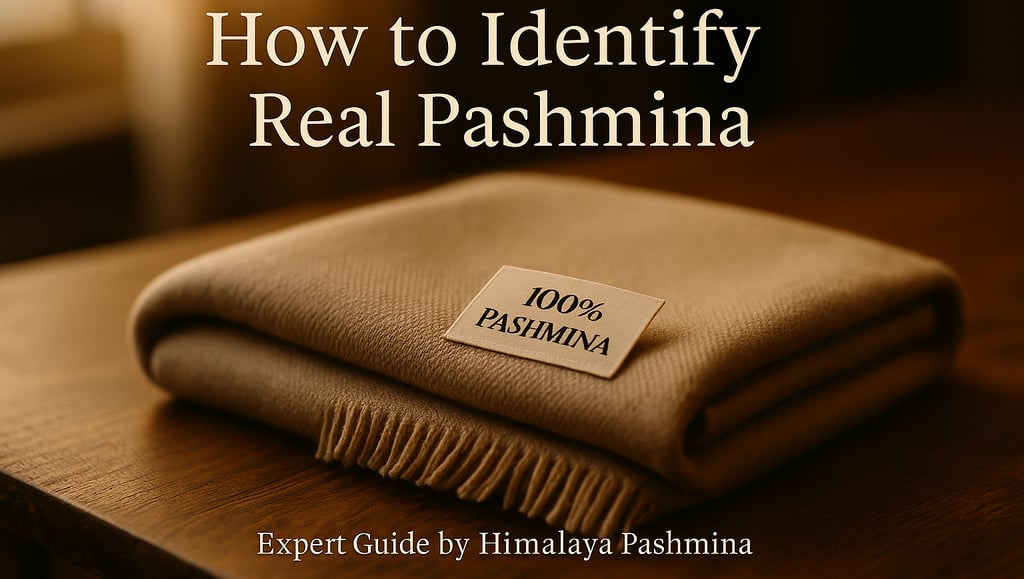

How to Tell if a Pashmina is Real: 7 Ways to Identify it's Authenticity
In today’s market, many shawls are labeled as "pashmina" — but only a few are genuinely crafted from the fine undercoat of Himalayan Chyangra goats. So how can you tell if your pashmina is the real deal?
Whether you’re shopping for the first time or reevaluating what’s in your closet, this guide reveals how to test, feel, and spot authentic pashmina vs. mass-produced fakes.
Let’s begin.
1. Check the Fiber Source (Read the Label Carefully)
Real pashmina comes from the inner wool (undercoat) of the Chyangra goat, found only in the high Himalayas of Nepal.
2. Feel the Texture
Genuine pashmina is incredibly soft, but not slippery or shiny.
It has a matte, elegant texture
It feels warm to the touch even when light
Fake versions often feel too smooth (like silk/polyester)
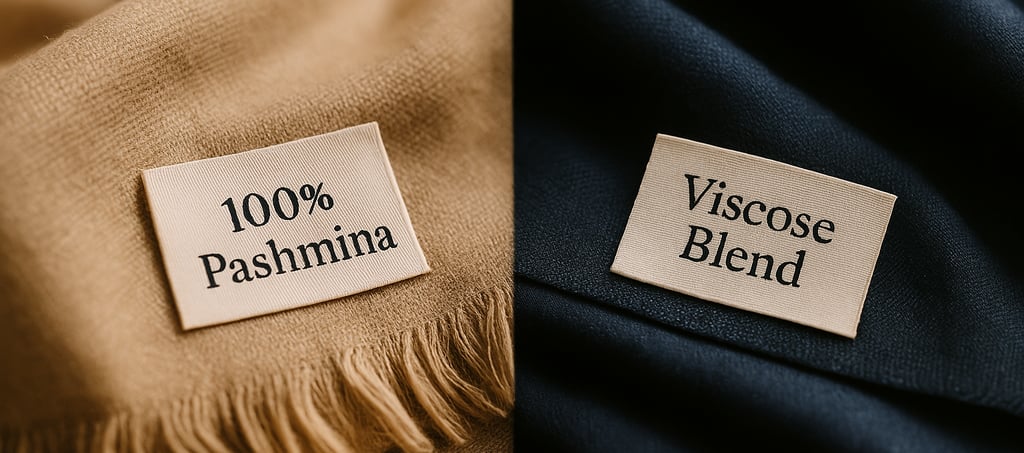

Tip: Rub it gently across your cheek or the back of your hand.
3. Do the Weave Inspection (Look Closer)
Authentic pashmina is handwoven on wooden looms.
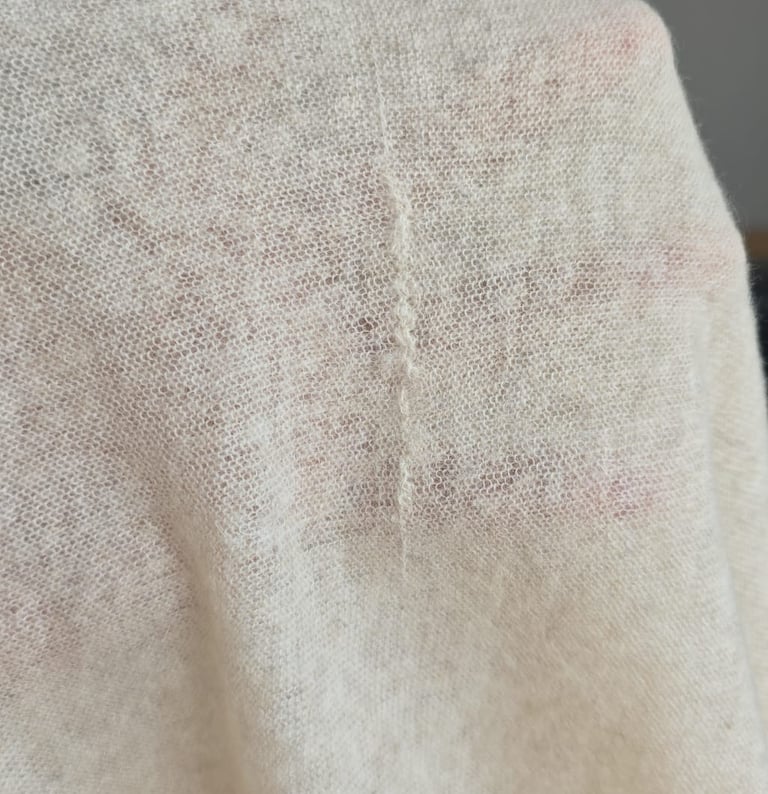

4. The Burn Test (With Caution!)
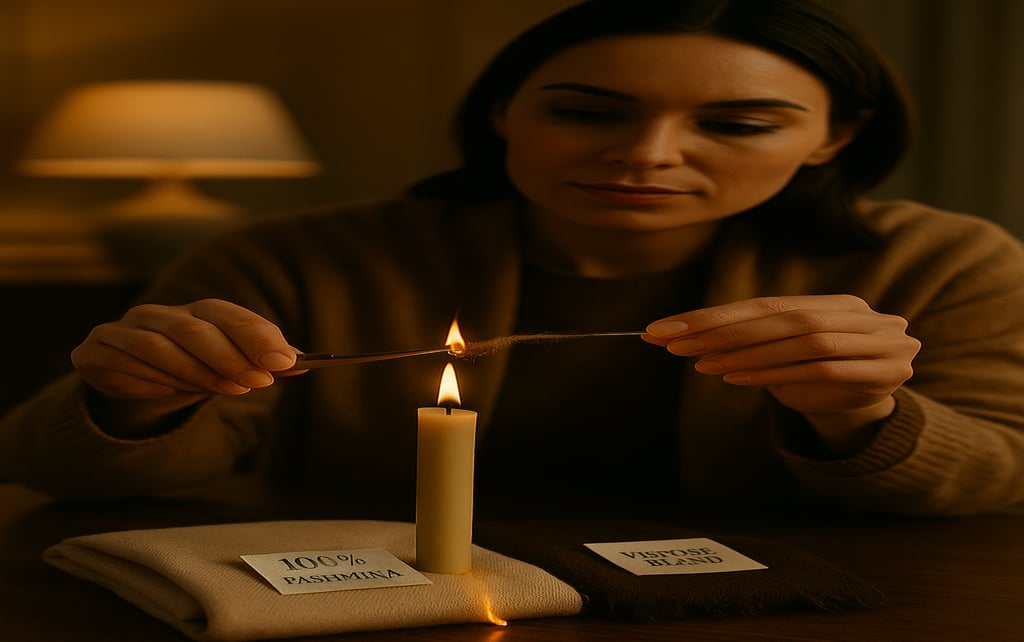

Take a single loose thread and burn it carefully: Real pashmina smells like burning hair It will leave a powdery ash Synthetic fibers smell like plastic and form hard beads.
5. Micron Count (The Scientific Method)
Real pashmina has a diameter of 12–16 microns. - This is thinner than regular cashmere (up to 21 microns) It can be tested using a textile lab or fiber microscope This is how certification boards assess luxury quality
6. Ask About the Origin
Authentic pashmina should come from: - Nepal (especially Mustang, Dolpo, or Humla regions) - Kashmir (known for older heritage but not all genuine today). Ask the seller about the source of the wool and the production process.
At Himalaya Pashmina, every piece is handwoven in Nepal using 100% pashmina from high-altitude Chyangra goats.
7. Price as a Signal
Note: Do not perform this on a new product unless it’s loose fiber!
Summary: How to Identify Real Pashmina
Test
Real Pashmina Fake Pashmina
Fiber
Real Pashmina: 100% Chyangra goat undercoat
Fake Pashmina: Acrylic, viscose, wool blend
Feel
Real Pashmina: Warm, matte, lightweight
Fake Pashmina: Slippery, glossy, sometimes stiff
Weave
Real Pashmina: Handwoven, slight imperfections
Fake Pashmina: Machine-made, uniform weave
Burn Test
Real Pashmina: Smells like hair, ash residue
Fake Pashmina: Plastic odor, bead residue
Origin
Real Pashmina: Nepal (or authentic Kashmir)
Fake Pashmina: Unknown or mass-produced
Price
Real Pashmina: €150+
Fake Pashmina: €20–€60
FAQs
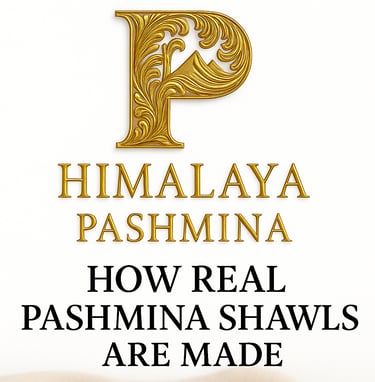

Wanna know what the authentic pashminas are made from scratch?. Click here to learn more.
That means: The weave will not be perfectly uniform. There may be tiny inconsistencies; this is a good sign. Machine-made shawls are too uniform.
Pro Tip: Hold the shawl up to light (like in the picture above). This is one of our most premium shafts. You may see slight imperfections that indicate hand craftsmanship.
Not all that glitters is gold. And not all that’s soft is pashmina.
It should be labeled as:
100% pashmina
100% cashmere (with <16 microns in diameter)
If the label reads “Viscose blend,” “Pashmina Silk,” or “Acrylic,” it’s likely not pure pashmina.
If it sounds too good to be true, it usually is. - Genuine pashmina shawls cost over €150–€400 due to limited supply and artisan labor - Fake pashminas sell for €20–€60 in mass markets Remember, real pashmina is an heirloom, not a fast fashion item
What is the difference between real and fake pashmina?
Fake pashmina is made from synthetic or wool blends, lacks breathability, and is machine-made. Real pashmina comes from Chyangra goats and is handwoven in small batches.
How do I test pashmina at home?
Try the burn test (on a loose thread), feel the texture, and inspect the weave.
Why is real pashmina expensive?
It takes over 200g of rare wool and several days of handweaving to make one shawl. The supply is limited to high-altitude goats.
Can I wash pashmina at home? Handwash gently in cold water with baby shampoo or dry clean. Never wring or hang in direct sun.
Elegance
Timeless pashmina scarves for conscious living.
Contact
Sustainability
Himalaya Pashmina© 2025. All rights reserved.
Legal
info@himalayapashmina.de
Edisonstr. 56, 12459 Berlin-Oberschöneweide
+4917643486144
Bista Suresh ( Himalaya Pashmina)